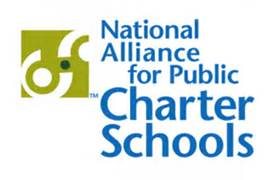In the past three years, 18 states have lifted caps on the number of charters schools allowed, another sign that lawmakers are embracing charters as valuable options in public education.
 “I think there’s a growing recognition from state policymakers that charter schools are one of the pieces of the puzzle of education reform,’’ said Todd Ziebarth of the National Alliance for Public Charter Schools. “They’re not the silver bullet. They’re not a panacea.’’
“I think there’s a growing recognition from state policymakers that charter schools are one of the pieces of the puzzle of education reform,’’ said Todd Ziebarth of the National Alliance for Public Charter Schools. “They’re not the silver bullet. They’re not a panacea.’’
But when charter schools are allowed to push the traditional system, they can become the labs of innovation they were designed to be, he said.
The information on caps comes in a new report from the alliance, which also looked at other changes states have made to charter school laws. Forty-two states and the District of Columbia now have charter schools, and the alliance concluded 35 of them strengthened their laws. In the alliance’s view, that could mean anything from increasing transparency of the approval process to ensuring local charter school authorizers are adequately funded.
Most of the progress was on lifting the caps, said Ziebarth, who co-authored the report and is the alliance’s senior vice president for state advocacy and support. Between 2010 and the beginning of 2013, 16 states lifted caps. Since January, Mississippi and Texas have joined the list.
Mississippi went from allowing 12 chronically low-performing traditional schools to convert into charters to an independent authorizer that can approve opening up to 15 startup charters per year. In Texas, which capped charters statewide at 215, new legislation fell short of removing the cap completely but allows for gradual growth to 305 charters by 2019.
Other states that made big changes to caps include Missouri, which once limited charters to St. Louis and Kansas City but now allows them statewide, and North Carolina, which nixed a 100-school limit in 2011.
Federal Race To The Top grants spurred many states to lift or do away with the caps in 2009 because the move was required to compete, Ziebarth said, but that effort had run its course by 2010.
The alliance counts more than 520,000 students on charter school waiting lists nationwide. But Ziebarth said caps aren’t the biggest hurdles to meeting demand. There’s also lack of equitable funding and facilities, and the fact that just about every state allows school districts to authorize charter schools – which can bog down the process of approvals.
“It’s kind of a shot-gun wedding,’’ Ziebarth said.
Those are issues state leaders must address, said alliance President Nina Rees.
“Despite strong, bipartisan progress by many visionary state legislators, most states still have yet to catch up to parental demand,’’ she said in a prepared statement. “And, we have a long way to go to ensure that students in public charter schools receive the same funding as their peers in traditional public schools.’’